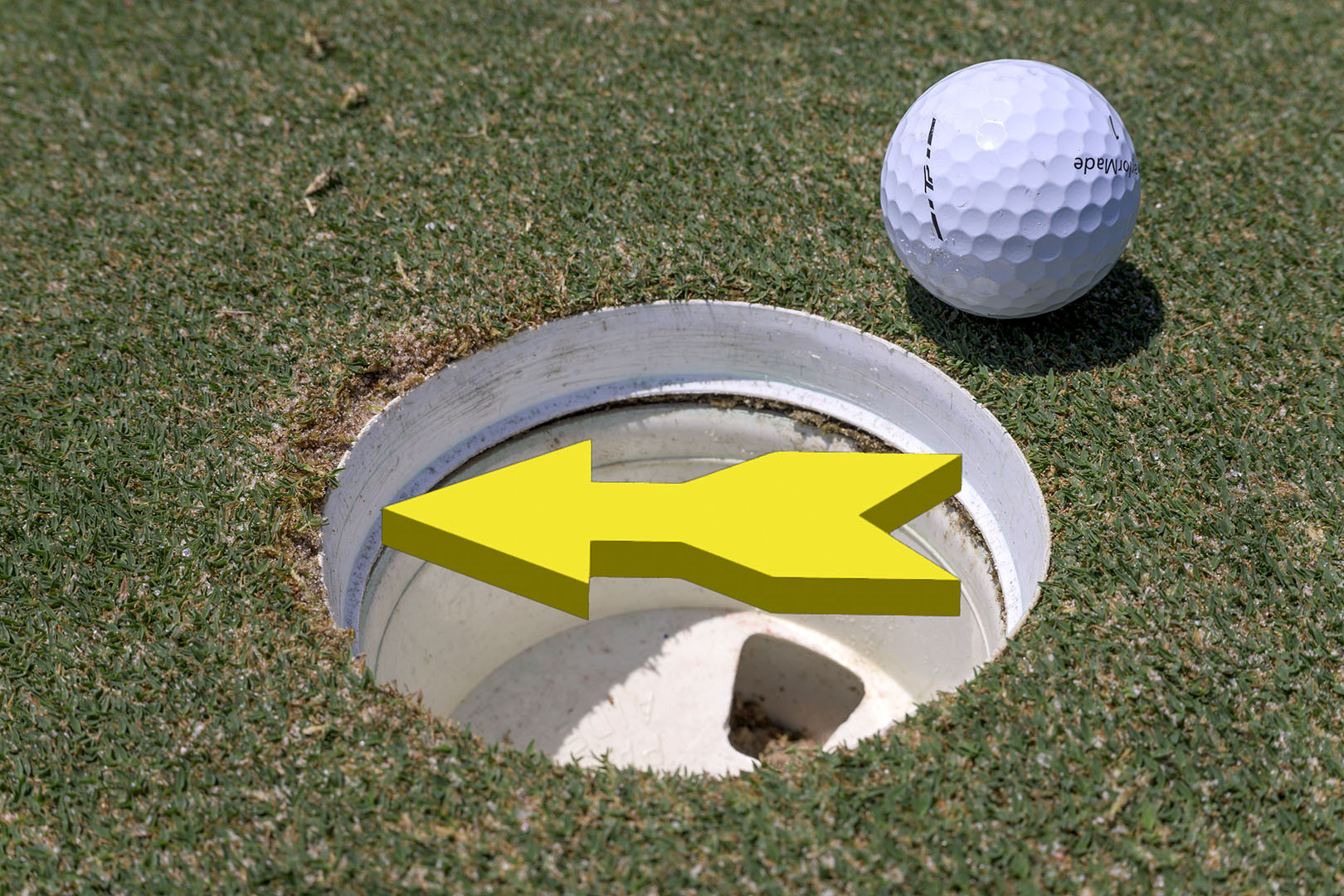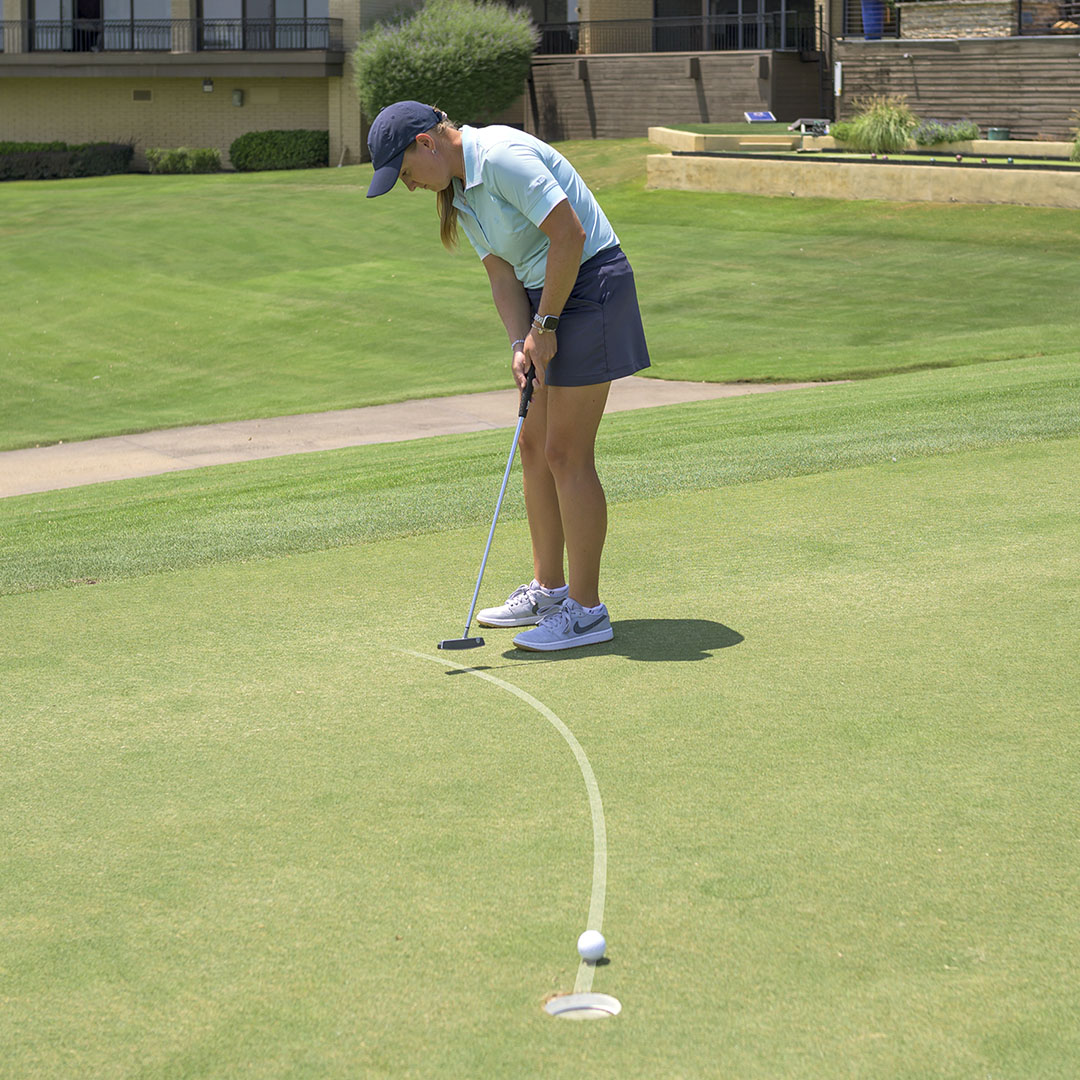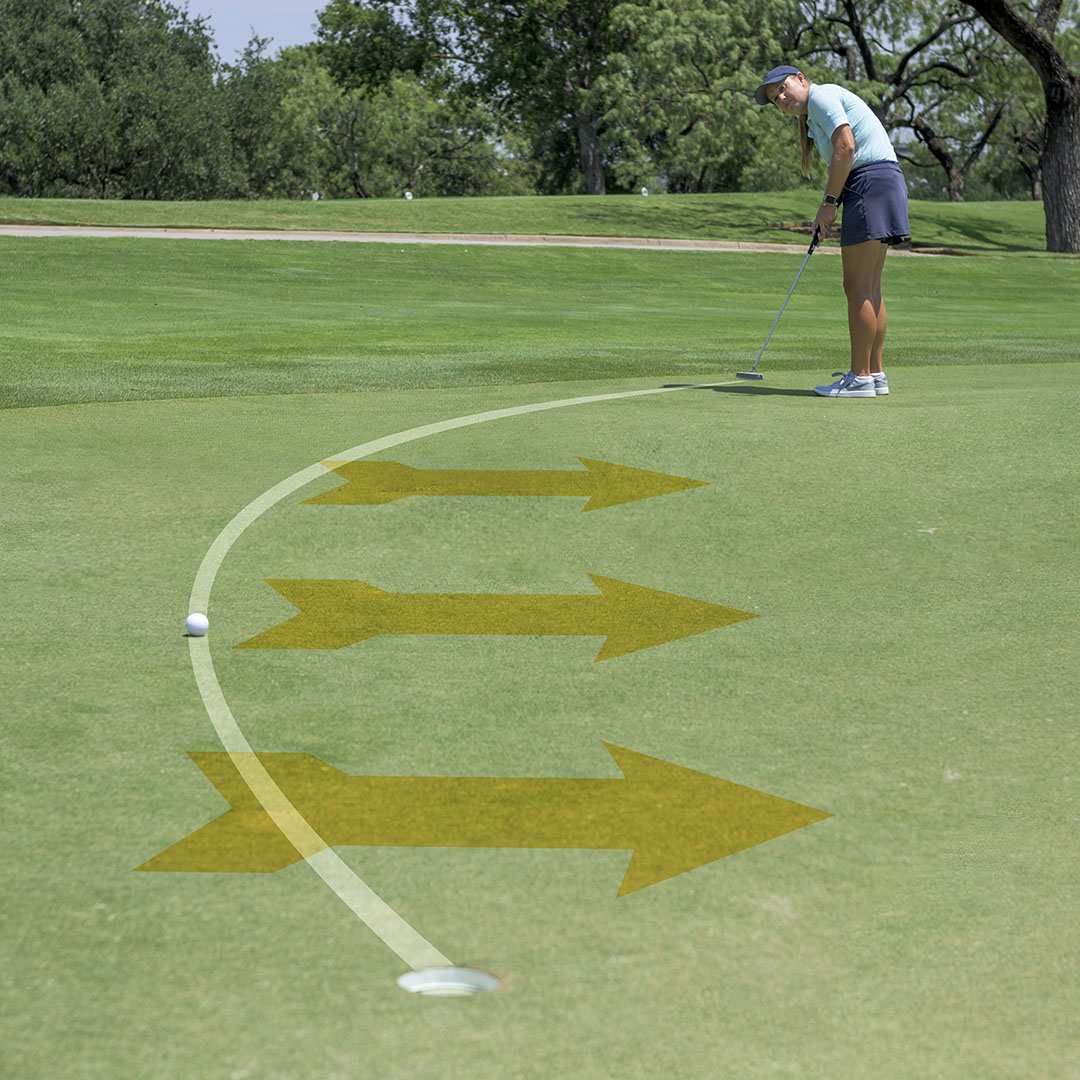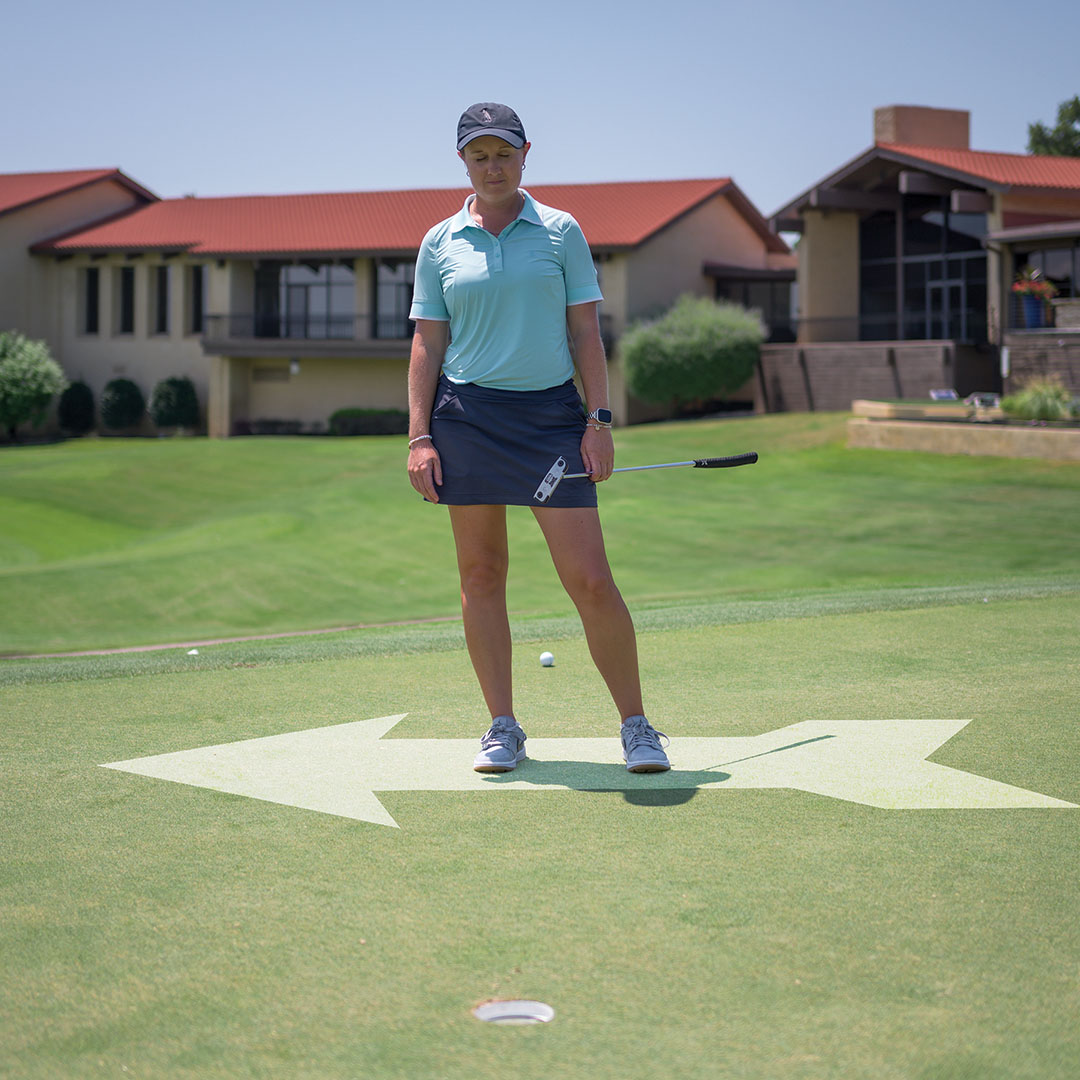On Bermuda greens, golf balls tend to break toward the rough or grainier edge of the hole due to the strong influence of grain direction – a characteristic feature of Bermuda grass. Unlike Bentgrass or Poa Annua, Bermuda has thick, horizontal blades that grow in a specific direction, often leaning toward the setting sun or a downhill slope. This “grain” can significantly influence the ball’s path, especially as it slows near the hole.

As the grass around the cup is cut tightly and repeatedly, the grain continues to grow away from the center of the hole and toward the surrounding collar or rough. This causes the grass on the edge of the cup to lean slightly outward, creating a subtle tilt in the surface. As the ball loses speed near the hole, gravity and the direction of the grain work together to guide it toward the side where the grass is growing – usually toward the lower, rougher edge.
Even on putts that appear flat or straight, the combination of grain and gravity can cause the ball to veer off course at the last moment. This is why on Bermuda greens, understanding and reading grain is just as critical as reading slope.
Straight putts at 12 and 6 o’clock often break toward water. Stand halfway between the ball and the hole: which leg straightens? The ball will break toward that side.

This putt is an example of the ball breaking towards the rough edge of the hole. The rough edge of the hole was on the right side of the cup, so I aimed left. The putt then broke from left to right.
To read greens more effectively, look around the hole and study the entire green, identifying both the high side and low side. The arrows in the picture represent the right side being the high side and left side being the low side. The golf ball will break towards the low side. Since the low side is to the left, I aimed right, and the ball broke right to left.

Have you ever heard of AimPoint? AimPoint is a scientific method of reading greens that uses a golfer’s sense of slope – measured by standing on the green and feeling it with their feet – to determine the exact spot to aim. Rather than relying solely on visual reads, AimPoint teaches players to read break based on percentage slope, distance, and speed, resulting in more consistent, confident reads.
How It Works
Feel the Slope: The golfer straddles the line of the putt and uses their feet to assess how much the green is sloping (1%, 2%, etc.).

Assign a Number: That slope value is converted into a reference point using a simple chart or hand-based visualization (e.g., holding up fingers to mark the aim point).
Aim and Trust It: The golfer then aims at that point – often outside the hole – and rolls the ball confidently along that line.
There are ways to train in order to be able to feel percentages of slopes accurately.
A simple version of AimPoint I love to teach is to have students walk halfway between the ball and the hole, straddling the line so they are not standing on it. From here, hold the putter in the air (without resting it on the ground) and close your eyes so the visual of the green does not influence what you feel. From here, do you feel your weight fall to your left side slightly or right side? If your weight falls to your right side, this means the putt will break left to right (breaking towards the side where your weight falls). If your weight falls to your left side, this means the putt will break right to left (breaking towards the side where your weight falls).
Drills I like to do to for practicing green reading
Throw balls down on the green and practice walking halfway between the ball and the hole, feeling which way your weight falls. Then check the break by rolling the ball. The more you practice this, the easier it becomes to tell which way your weight falls. To start, practice on severe slopes.
Pick a hole and practice finding the straight uphill putt. Putts will break towards the straight putt (also known as the fall line).
If you are interested in learning AimPoint, reach out – I offer clinics to help golfers master this method. You can contact me at 972-399-9040 or by e-mailing kpikegolf@gmail.com